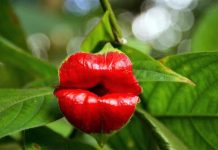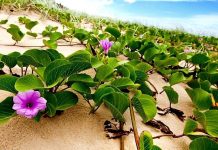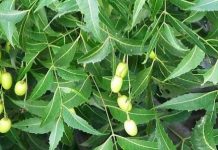Scientific name: Heliotropium curassavicum L.
Family: Boraginaceae
Synonym: Heliotropium glaucum Salisb.
Bengali/Vernacular name: Nona hatishur.
English name: Salt heliotrope, Seaside heliotrope, Wild heliotrope.
Description of the plant: A glabrous, prostrate, halophytic, perennial succulent herb, 30-80 cm long. Leaves simple, lower opposite, and upper sub-opposite, subsessile, narrowly oblanceolate or linear-spatulate. Inflorescence simple or forked, a spike-like terminal, or dense cymes, 3-10 cm long, lax in fruits. Flowers white, female sessile, bracteate, the middle nerve terminating below the rounded apex.

Plant parts used: Leaf.
Ethnomedicinal uses: Paste prepared from leaves of the plant is applied on the infected skin twice a day until the boils is cured.
A fresh juice extracted from leaves of the plant, after adding few drops of honey it is taken thrice a day (10 ml amount each time) for three days to treat cough.
A curry cooked with the young shoots of the plant is taken twice a day for ten days to treat anaemia.
Decoction prepared from leaves of the plant is given twice a day until the asthma is cured.
Juice extracted from the leaves of the plant, then the syrup is made with that juice, salt, water, and it is taken twice a day for seven days to treat fever.
Distribution: It occurs in coastal regions in Bhola, Satkhira, and Noakhali districts.
Is this plant misidentified? If yes, please tell us….















… [Trackback]
[…] Find More on that Topic: natureinfo.com.bd/heliotropium-curassavicum/ […]